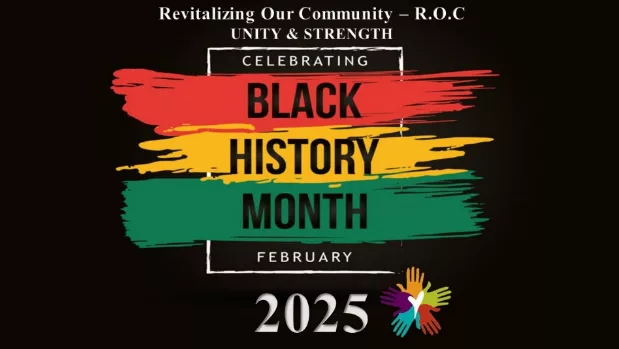
Over the next 25 days, Revitalizing Our Community, ROC will be spotlighting amazing African Americans, who have made contributions to the community of Brownwood and Brown County. Working within this years theme of “Unity and Strength: We Are One” ROC will also Included in the spotlights various Brownwood Youth.
ROC president Draco Miller stated, “spotlighting and celebrating individuals who have made and or are making a positive impact on our community is important. These spotlights of both young and old will telling their story. Some of these individuals may not be well known in the community, while others are house hold names. Brownwood has a rich history of great community members. It’s an honor to spend the next couple weeks spotlighting them and telling their stories.”
How Black History Month Came to be:
The precursor to Black History Month was created in 1926 in the United States, when historian Carter G. Woodson and the Association for the Study of Negro Life and History (ASNLH) announced the second week of February to be “Negro History Week”. This week was chosen because it coincided with the birthday of Abraham Lincoln on February 12 and that of Frederick Douglass on February 14, both of which Black communities had celebrated since the late 19th century. For example, in January 1897, school teacher Mary Church Terrell persuaded the Washington, D.C. school board to set aside the afternoon of Douglass’s birthday as Douglass Day to teach about his life and work in the city’s segregated public schools. The thought process behind the week was never recorded, but scholars acknowledge two reasons for its birth: recognition and importance. In 1915, Woodson had participated in the Lincoln Jubilee, a celebration of the 50 years since emancipation from slavery held in Bronzeville, Chicago. The summer-long Jubilee, which drew thousands of attendees from across the county to see exhibitions of heritage and culture, impressed Woodson with the need to draw organized focus to the history of black people. He led the founding of the ASNLH in Chicago that fall, toward the end of the Jubilee. At the time of Negro History Week’s launch, Woodson contended that the teaching of Black History was essential to ensure the physical and intellectual survival of Blacks within broader society,
Woodson Stated:
“If a race has no history, it has no worthwhile tradition, it becomes a negligible factor in the thought of the world, and it stands in danger of being exterminated.”
Black educators and Black United Students at Kent State University first proposed Black History Month in February 1969. The first celebration of Black History Month took place at Kent State a year later, from January 2 to February 28, 1970. Six years later, Black History Month was being celebrated all across the country in educational institutions, centers of Black culture, and community centers, both great and small, when President Gerald Ford recognized Black History Month in 1976, during the celebration of the United States Bicentennial. He urged Americans to “seize the opportunity to honor the too-often neglected accomplishments of Black Americans in every area of endeavor throughout our history.